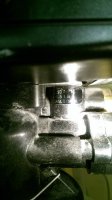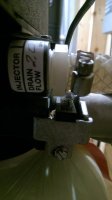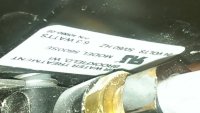First off want to tell you how good it was to find your forum! Perplexing issues with my water softener are getting the better of me.
2008 I installed a 32K grain water softener using a Fleck 5600 SE Downflow V2.0 head.
The water I get from the city has been between 8 and 4 grains per gallon calcium.
Two people in the house.
When I first set the unit up I was going 2700 gallons before regeneration and never any issues. I would spot check with test sticks and never had any indication that the resin had maxed out.
In 2012 we did a complete renovation. Circumstances resulted in the softener sitting for almost two years. I did a regeneration prior to removing the unit from service.
Once back in the house I hooked unit up and all was OK at the start but very soon I started seeing a decline in the volume of water that was being softened after regeneration. I changed out the resin to see if that would help. So far it has shown an improvement BUT I am not back to where I was. Maybe 1400 gallon before signs of hardness.
The regeneration cycle numbers are: #1-10, #2-60, #3-10, #4-12, #5-OFF. I have it set for 2200 gals and am not using a regeneration override.
The unit worked flawlessly for 4 years before being shut down. It does not work like it used to and I am at a loss as to why.
If you have any suggestions I would very much appreciate it. Perhaps some things I can look for?
Thanks in advance.
David
2008 I installed a 32K grain water softener using a Fleck 5600 SE Downflow V2.0 head.
The water I get from the city has been between 8 and 4 grains per gallon calcium.
Two people in the house.
When I first set the unit up I was going 2700 gallons before regeneration and never any issues. I would spot check with test sticks and never had any indication that the resin had maxed out.
In 2012 we did a complete renovation. Circumstances resulted in the softener sitting for almost two years. I did a regeneration prior to removing the unit from service.
Once back in the house I hooked unit up and all was OK at the start but very soon I started seeing a decline in the volume of water that was being softened after regeneration. I changed out the resin to see if that would help. So far it has shown an improvement BUT I am not back to where I was. Maybe 1400 gallon before signs of hardness.
The regeneration cycle numbers are: #1-10, #2-60, #3-10, #4-12, #5-OFF. I have it set for 2200 gals and am not using a regeneration override.
The unit worked flawlessly for 4 years before being shut down. It does not work like it used to and I am at a loss as to why.
If you have any suggestions I would very much appreciate it. Perhaps some things I can look for?
Thanks in advance.
David



